Final Project
This is my final project for the edX course “Japanese Books: From Manuscript to Print” taught by Melissa McCormick, Professor of Japanese Art and Culture at Harvard University. I enjoyed this class very much and highly recommend it if you like bookbinding or Japanese culture. Here is a link to the edX course. You can audit the course for free or pay if you want a certificate.
The final project was to create a book based on one of several stories and share the results with the team. It is easier to host the results on my own website or Instagram, so here it is.
Book Design
I chose “Oshidori” from Kwaidan by Lafcadio Hearn and designed a gōkan satsu as if this would be a volume in a full set of the Kwaidan stories. I divided the story into 9 parts to make two maki of 5 pages with a title page and a place for references and publisher. I edited images, mostly from Wikimedia Commons, with Adobe Photoshop to try and make them look like woodblock prints.
I planned to bind a pouch bound (fukurotoji) book. It is super easy to get confused when planning the signatures to remember what goes where so it will be correct when bound, especially when reading right to left. If I was going to actually carve a woodblock, I would also need to think in reverse. You can see an example of a printing plate on Brian Coppola’s page on Woodblock Printing.
In fact, my first attempt to emulate a woodblock was to print the signatures in reverse, then use acetone to transfer the laser ink to some paper that looked similar to old, discolored books. I though my sample worked pretty well, but it was going to take quite a lot more time, so I decided to use the normal laser prints.
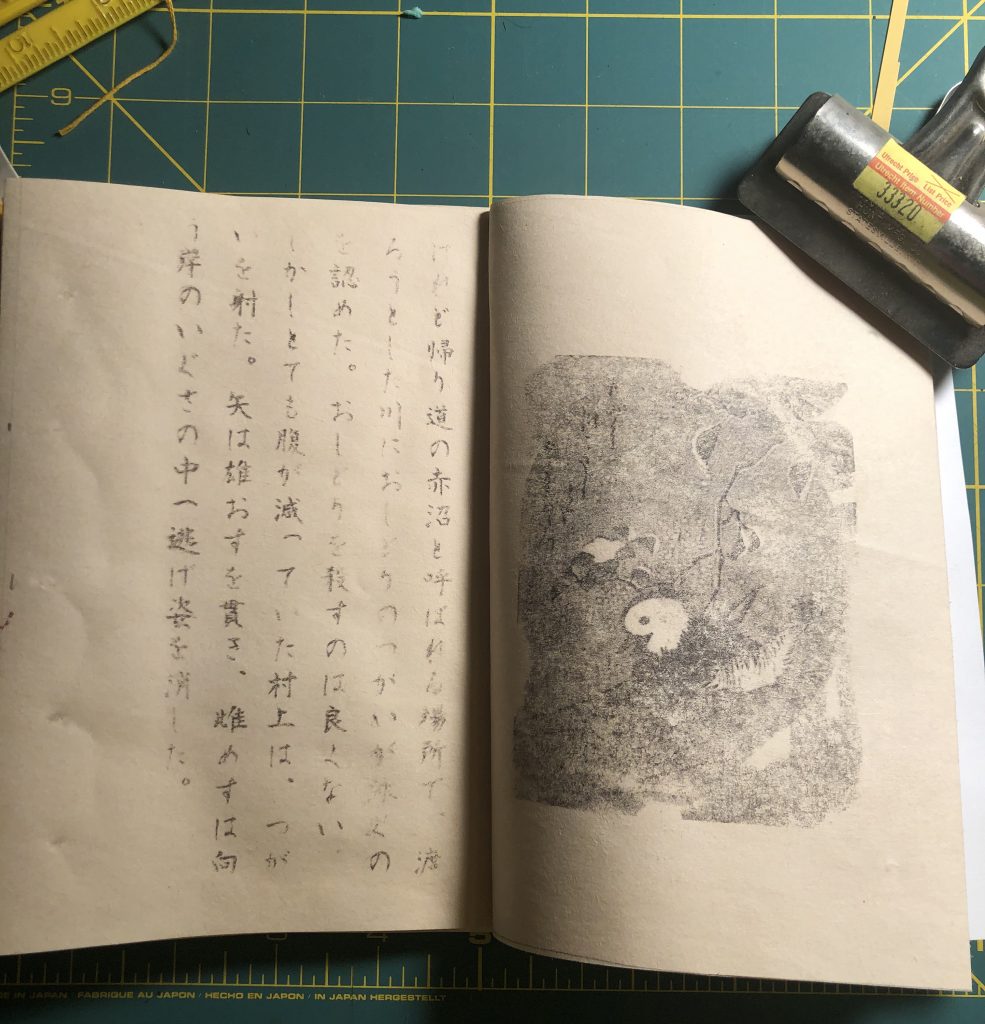
For the second iteration, I decided to just use printed pages directly.
I broke the story into two 5 page maki and made a chart in Visio for the signatures.
Maki 1
- Title
- The hunter/falconer
- The two mandarin ducks (oshidori)
- The cooked duck
- The crying woman appearing in Sonjō’s dream
Maki 2
- Female mandarin duck in the rushes.
- Sobbing woman
- A view of Akanuma
- The dead female duck
- Sonjō as a priest

I made a template with a border that looks like many Japanese bound books of the era, and pasted the images into the space. I found a Japanese version online at CoreDake and as my Japanese is rusty, I aligned the Japanese with the English with the page topics.
The text was laid out in Microsoft Word using the Aoyagi Kouzan (青柳衡山) Font using vertically formatted text blocks. Photoshop doesn’t handle this easily in the English version, so I took screen captures of the text in the document and used those in Photoshop. I wanted to try the text aligned around an irregular image like in several of the books. I made the background transparent, but it was often hard to read, so for a few other I placed on a background.
Book
After the 10 leaves were finished, I exported as JPG and printed on my laser printer. (I put notes in the margins to keep track of pages.) I trimmed them to size with a paper cutter. The final size will be 5.5 x 7 inches. I also cut two covers out of a paper with fibers embedded that looked like it might work. (I didn’t buy anything for this project, but I had scrapbooking supplies from a while back.)
I next folded each of the leaves in half and pressed with a bone folder until all pages that made up the two maki were folded neatly. You can see the extra bit for the spine.
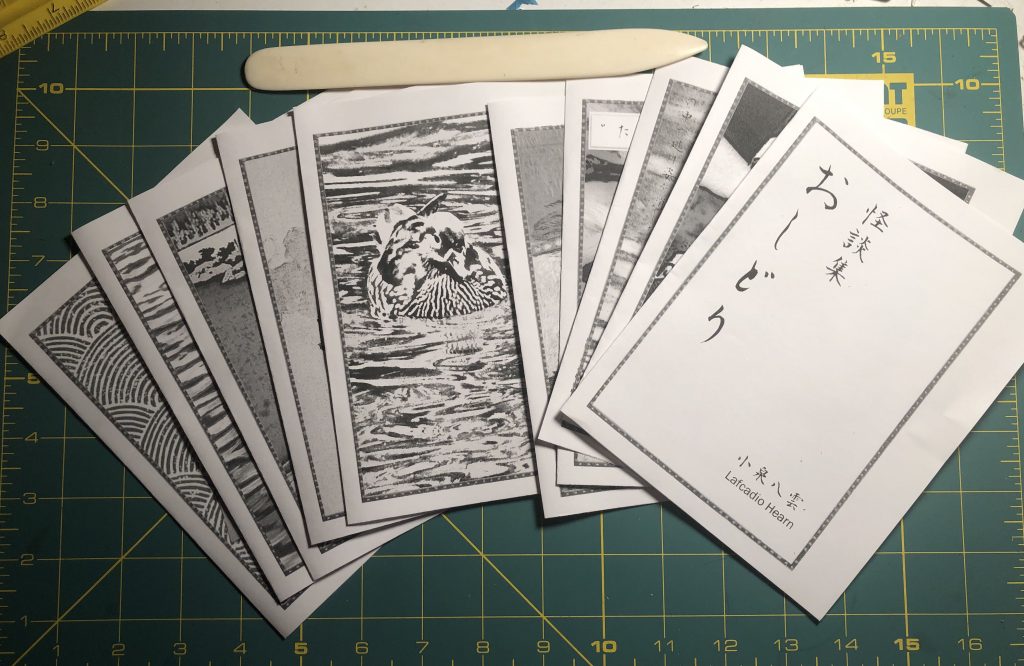
Then, I hand colored some small sections with chalk.
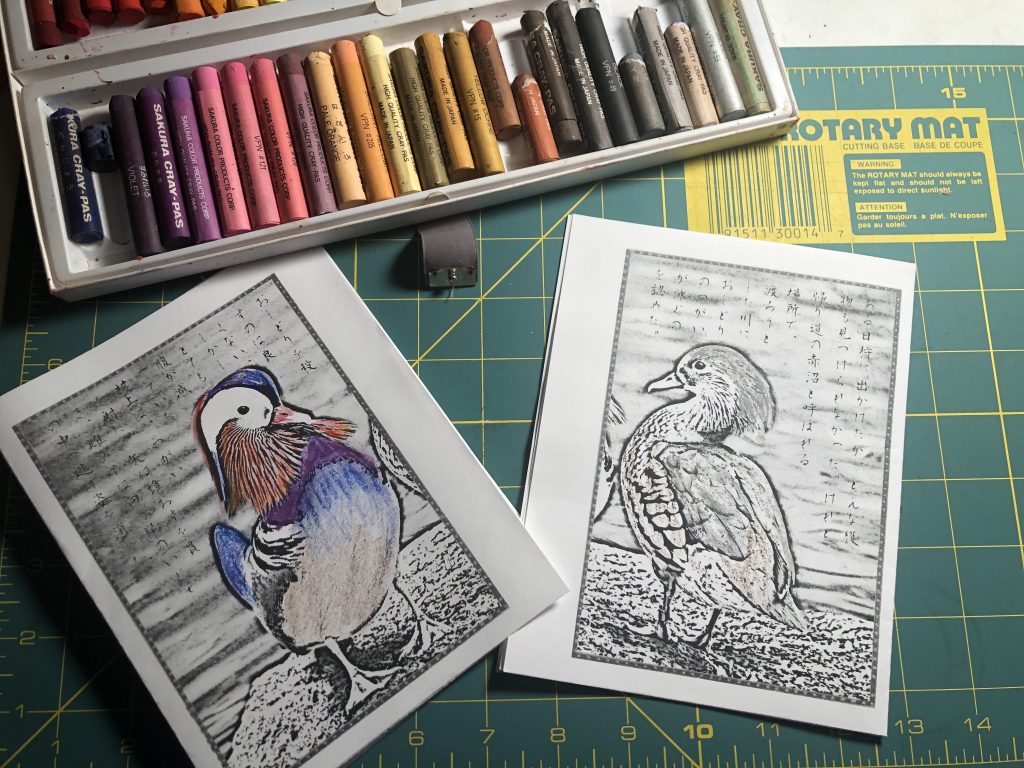
I placed the covers on either side of the signatures and clamped them on the opposite the edge to be bound to hold them in place.
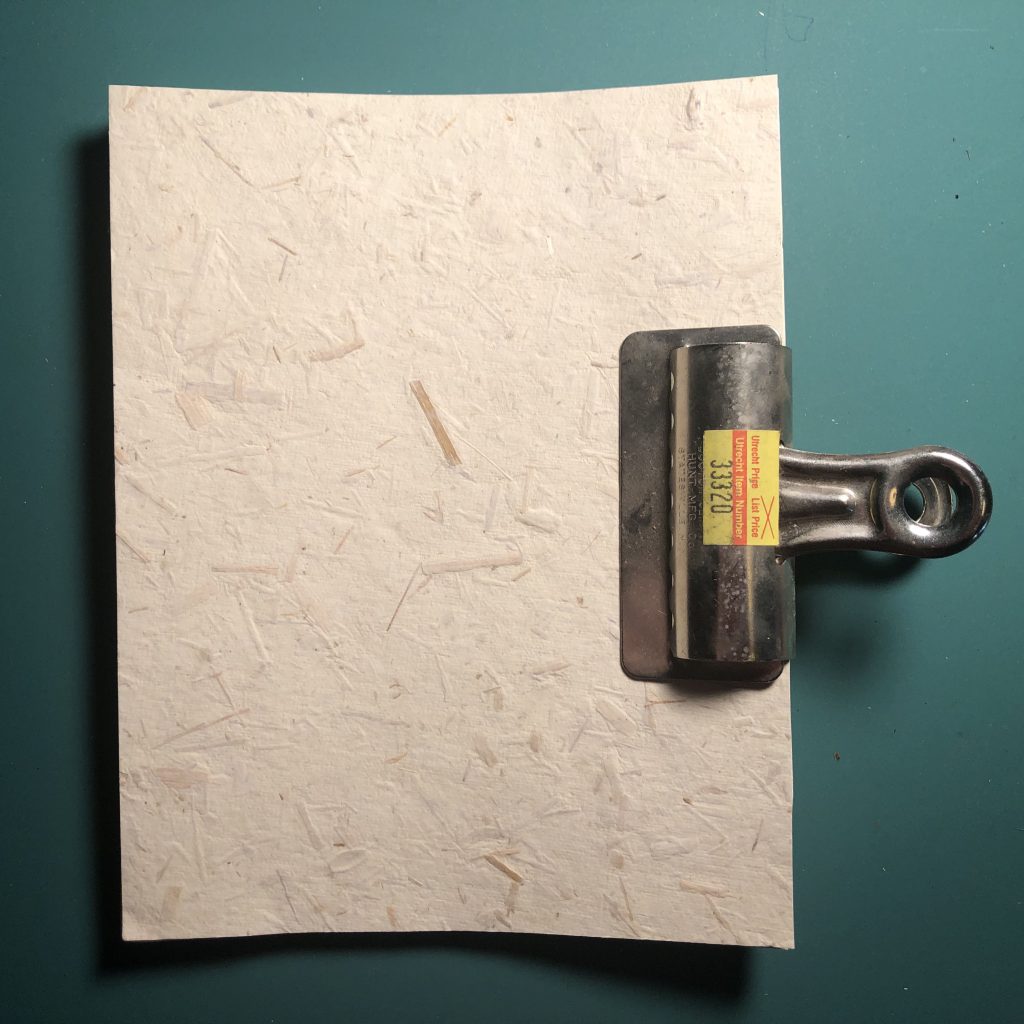
Next, I made a punch hole template for the binding pattern. I punched the holes with an awl through all the layers of the book.
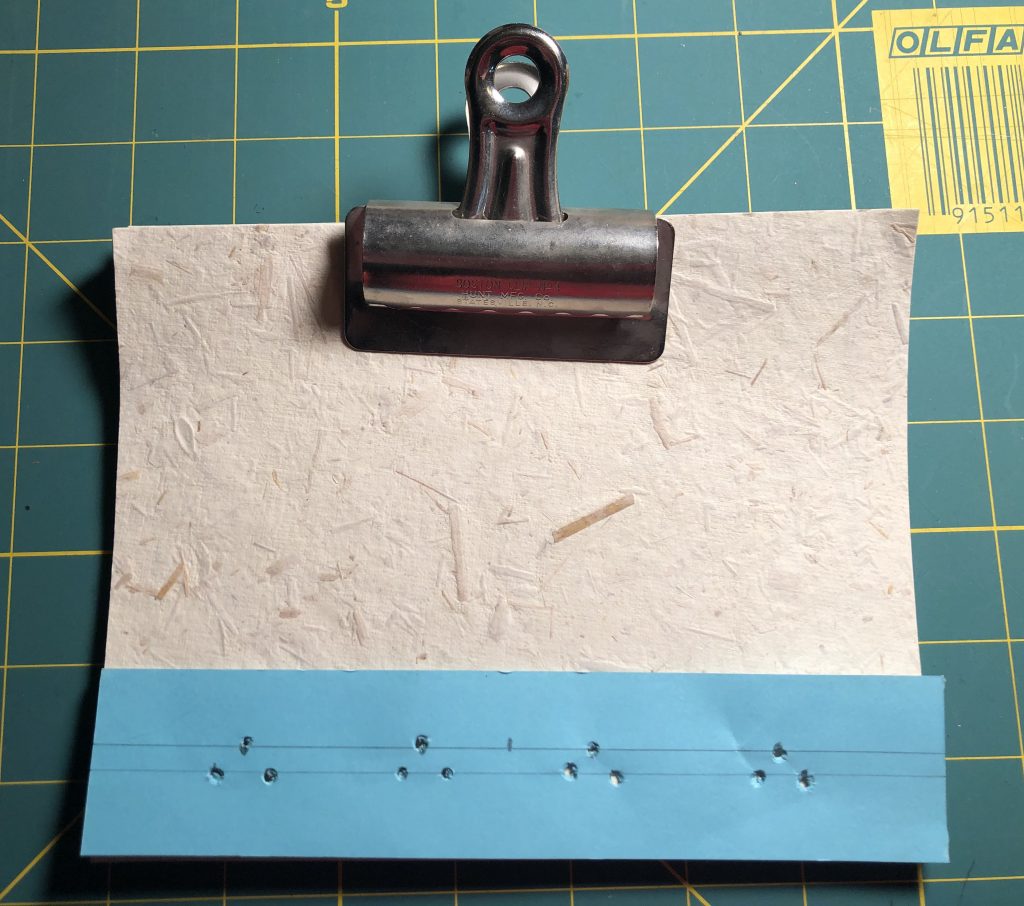
You traditionally use linen thread to bind Japanese books, but I only have natural colored, so I waxed embroidery floss in a purple to honor Lady Murasaki.
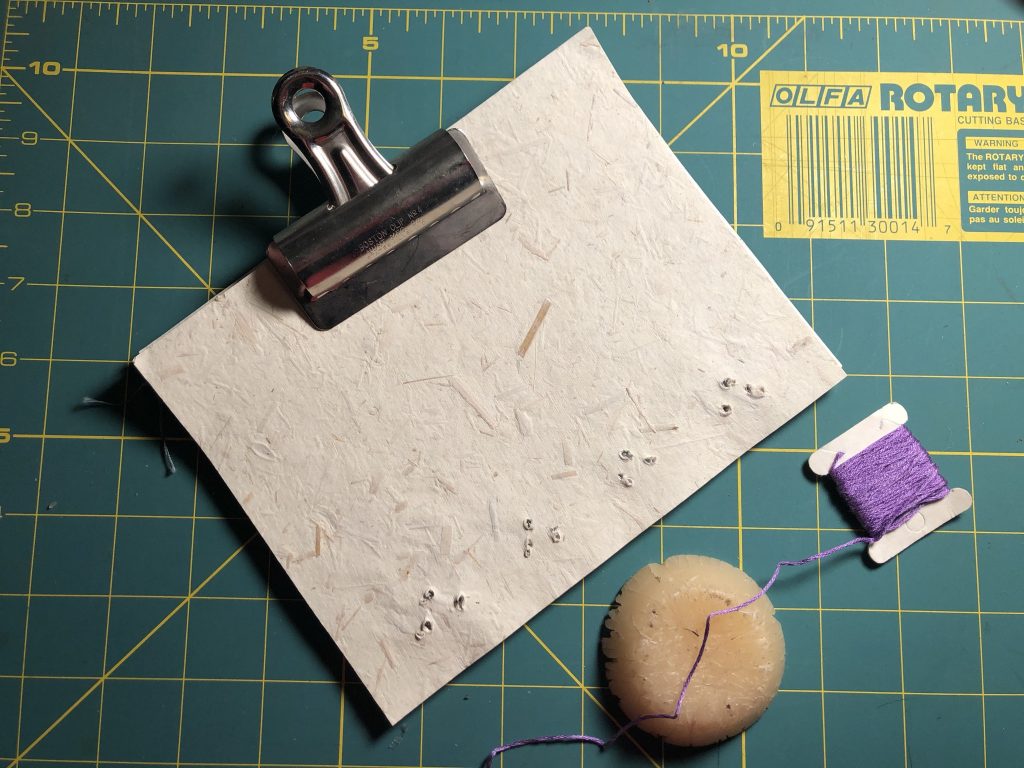
Here is a plan view of the book showing the “pouches” of the signature folded in half.
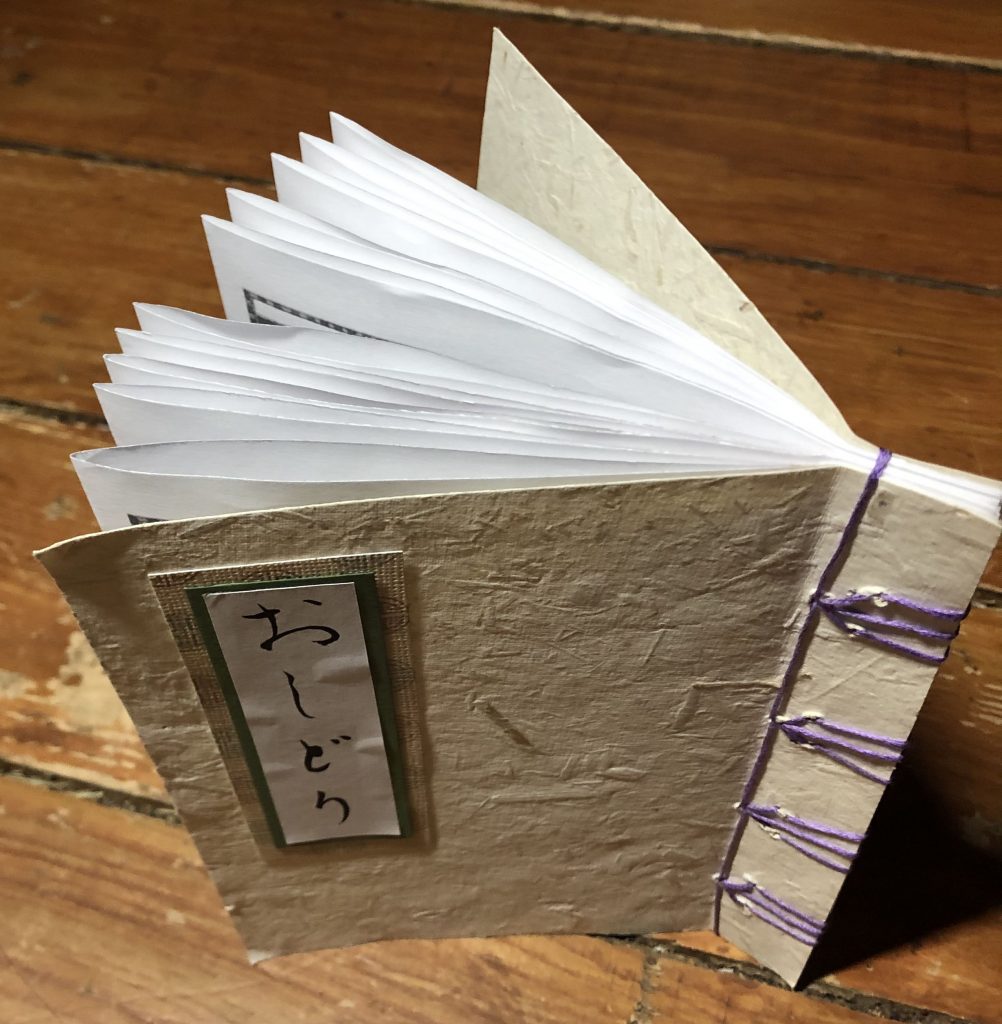
The Story of Oshidori
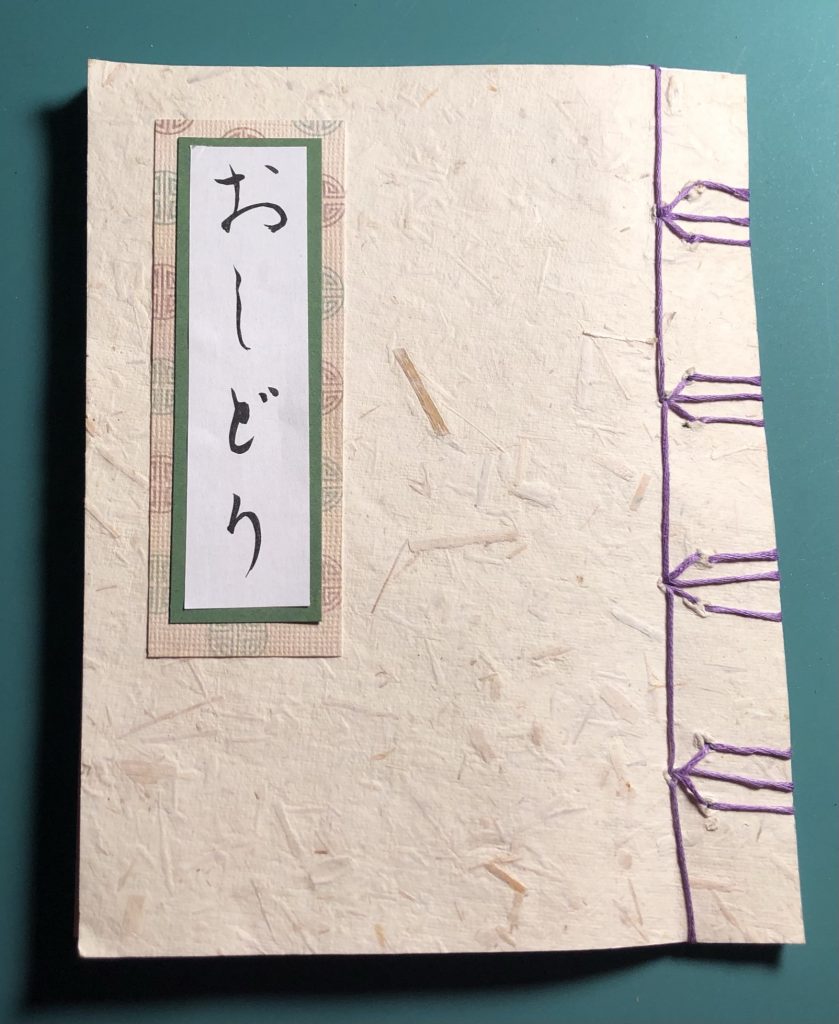
Here is the book with English translations beginning with the final book with a title bock on the front cover.
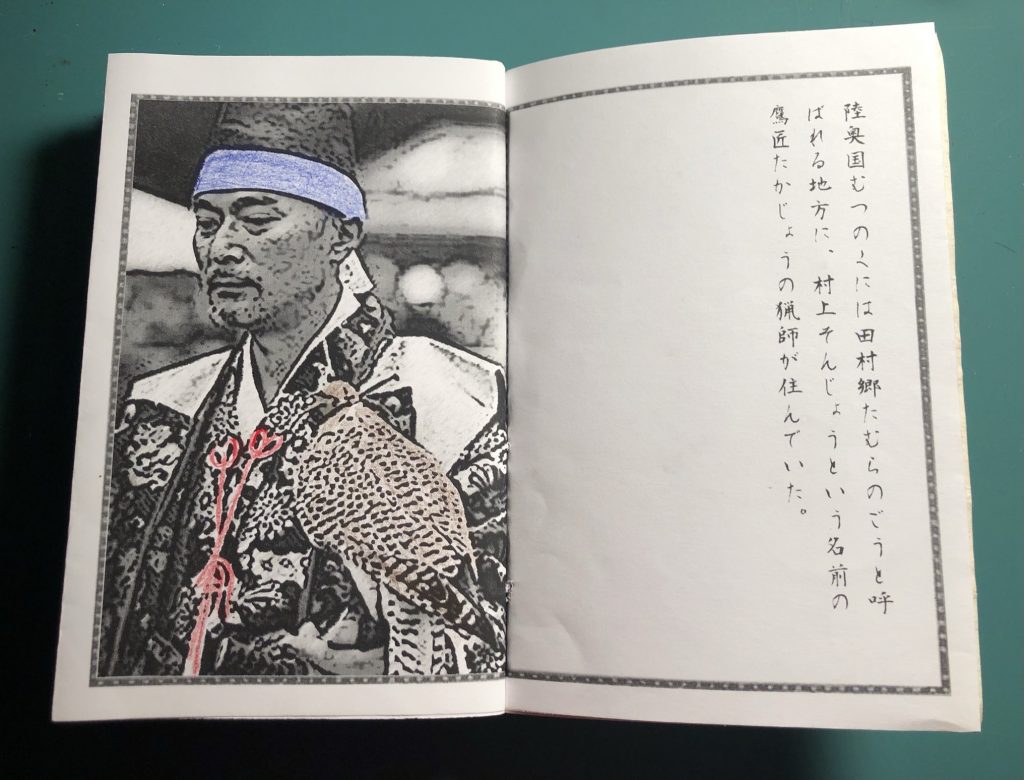
There was a falconer and hunter, named Sonjō, who lived in the district called Tamura-no-Gō, of the province of Mutsu.
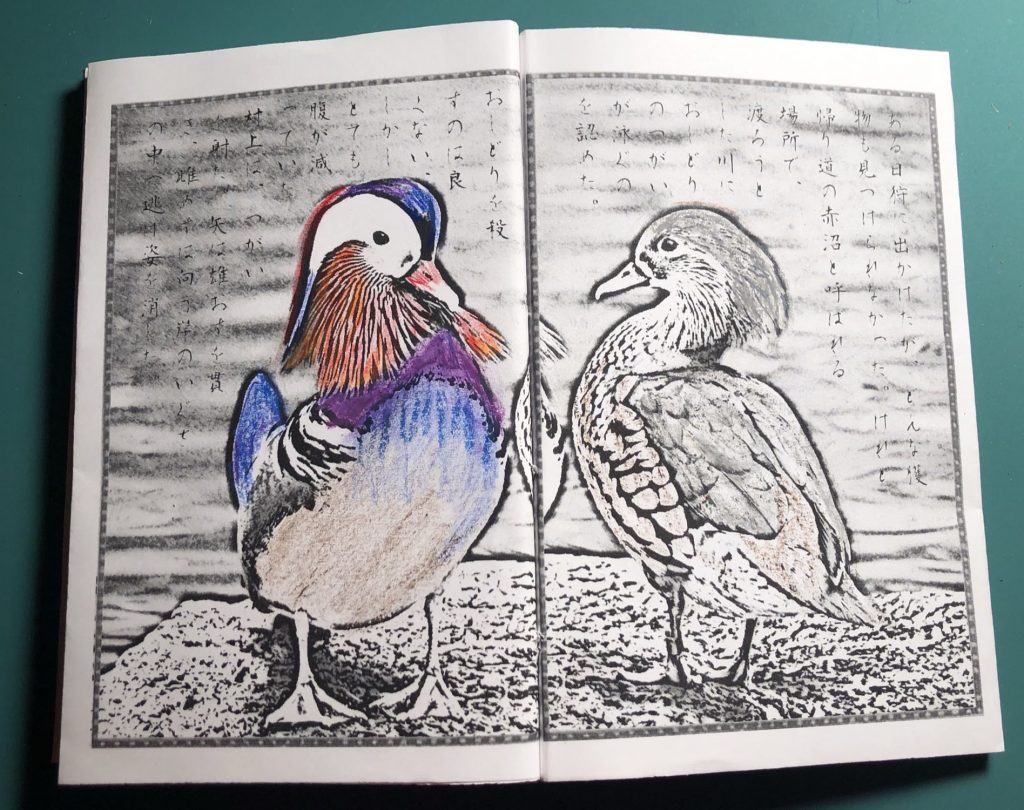
One day he went out hunting, and could not find any game. But on his way home, at a place called Akanuma, he perceived a pair of oshidori (mandarin-ducks), swimming together in a river that he was about to cross. To kill oshidori is not good; but Sonjō happened to be very hungry, and he shot at the pair. His arrow pierced the male: the female escaped into the rushes of the further shore, and disappeared.
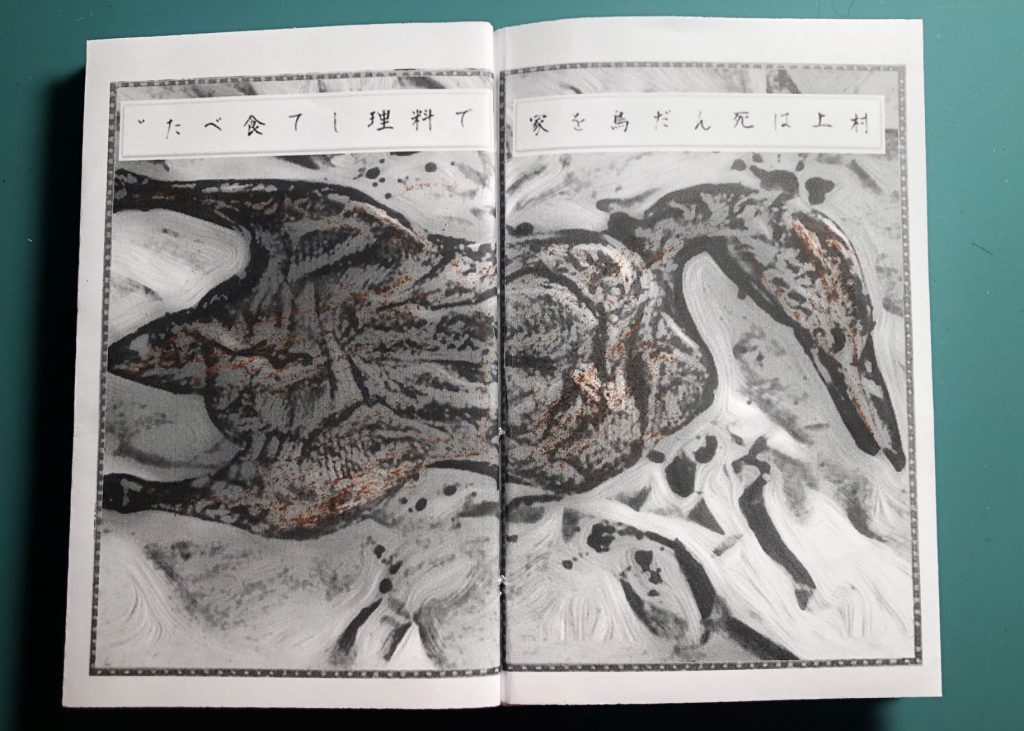
Sonjō took the dead bird home, and cooked it.
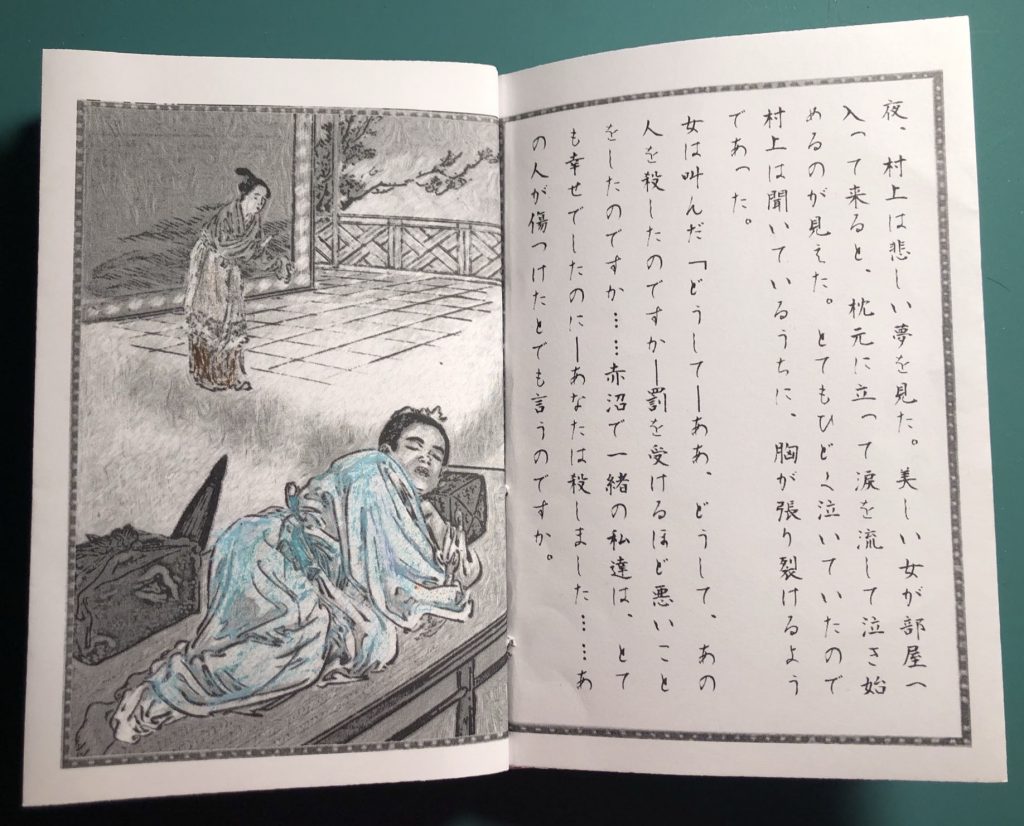
That night he dreamed a dreary dream. It seemed to him that a beautiful woman came into his room, and stood by his pillow, and began to weep. So bitterly did she weep that Sonjō felt as if his heart were being torn out while he listened.
And the woman cried to him: “Why,—oh! why did you kill him?—of what wrong was he guilty?… At Akanuma we were so happy together,—and you killed him!… What harm did he ever do you? Do you even know what you have done?—oh! do you know what a cruel, what a wicked thing you have done?… Me too you have killed,—for I will not live without my husband!… Only to tell you this I came.
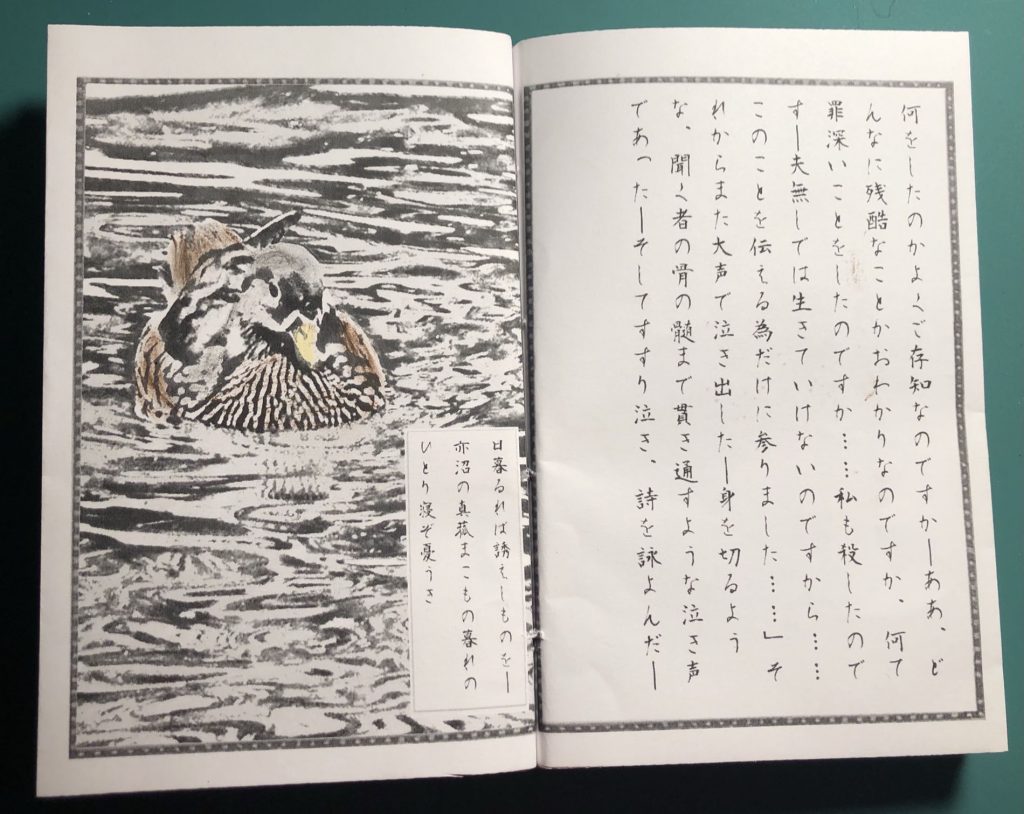
… Then again she wept aloud,—so bitterly that the voice of her crying pierced into the marrow of the listener’s bones;—and she sobbed out the words of this poem:—
At the coming of twilight, I invited him to return with me
Now to sleep alone in the shadow of the rushes of Akanuma
ah! what misery unspeakable!
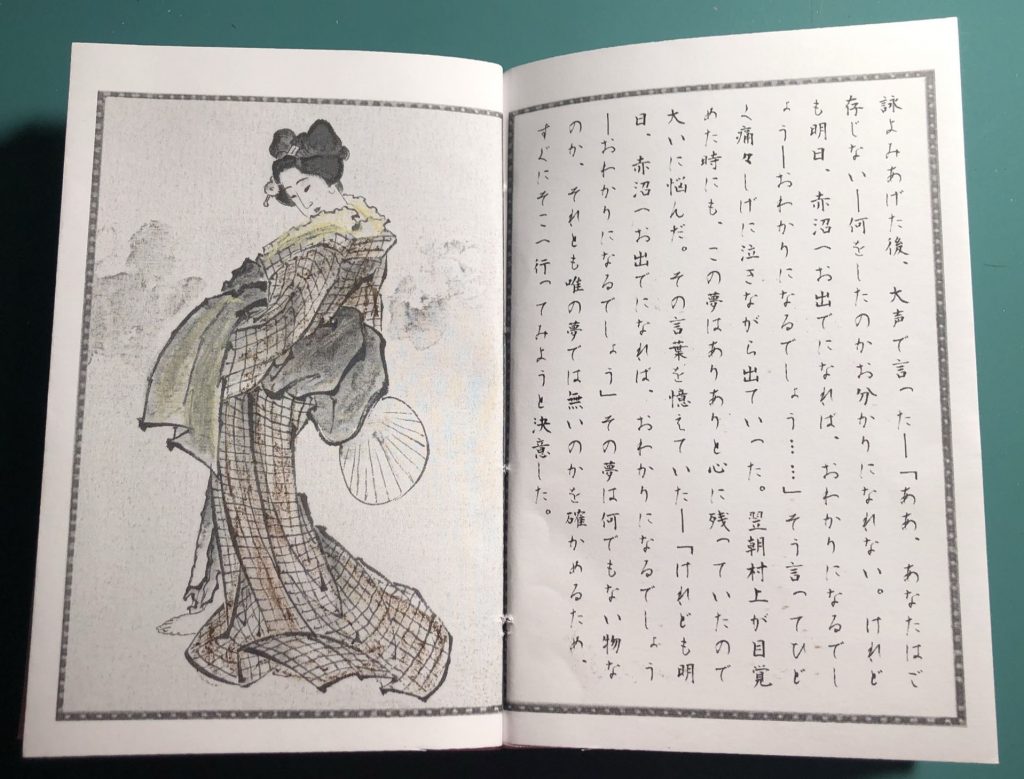
And after having uttered these verses she exclaimed:—”Ah, you do not know—you cannot know what you have done! But to-morrow, when you go to Akanuma, you will see,—you will see…” So saying, and weeping very piteously, she went away.
When Sonjō awoke in the morning, this dream remained so vivid in his mind that he was greatly troubled. He remembered the words:—”But to-morrow, when you go to Akanuma, you will see,—you will see. ” And he resolved to go there at once, that he might learn whether his dream was anything more than a dream.
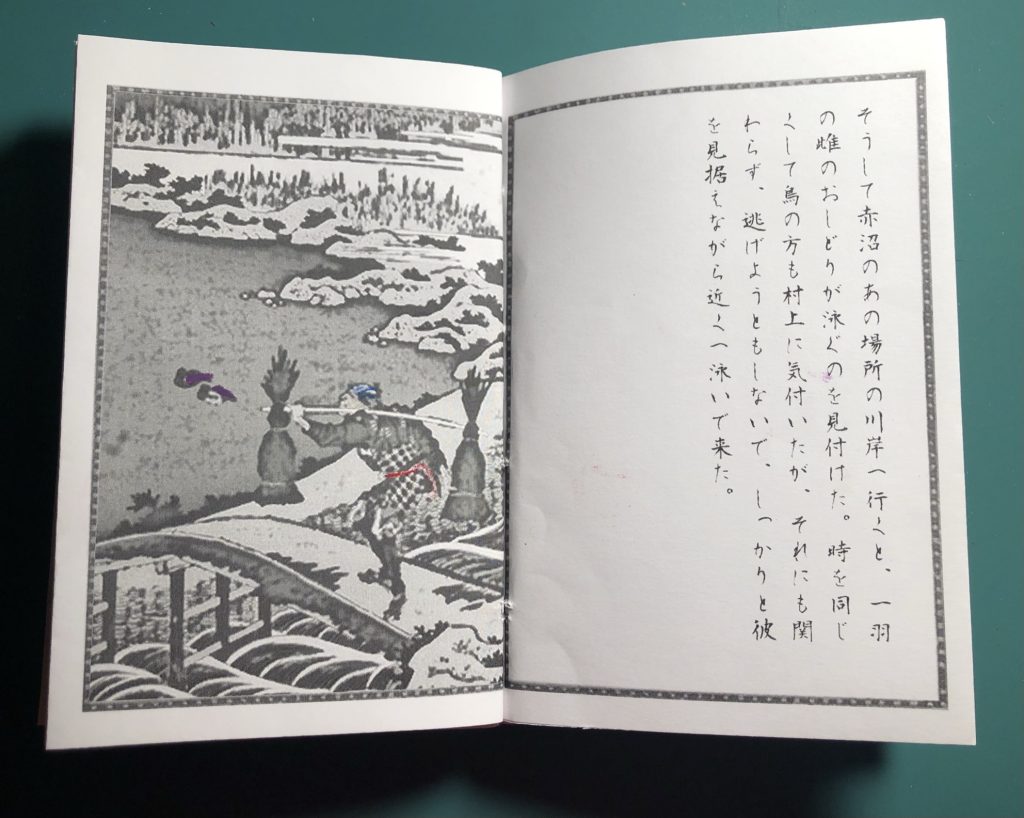
So he went to Akanuma; and there, when he came to the river-bank, he saw the female oshidori swimming alone. In the same moment the bird perceived Sonjō; but, instead of trying to escape, she swam straight towards him, looking at him the while in a strange fixed way.
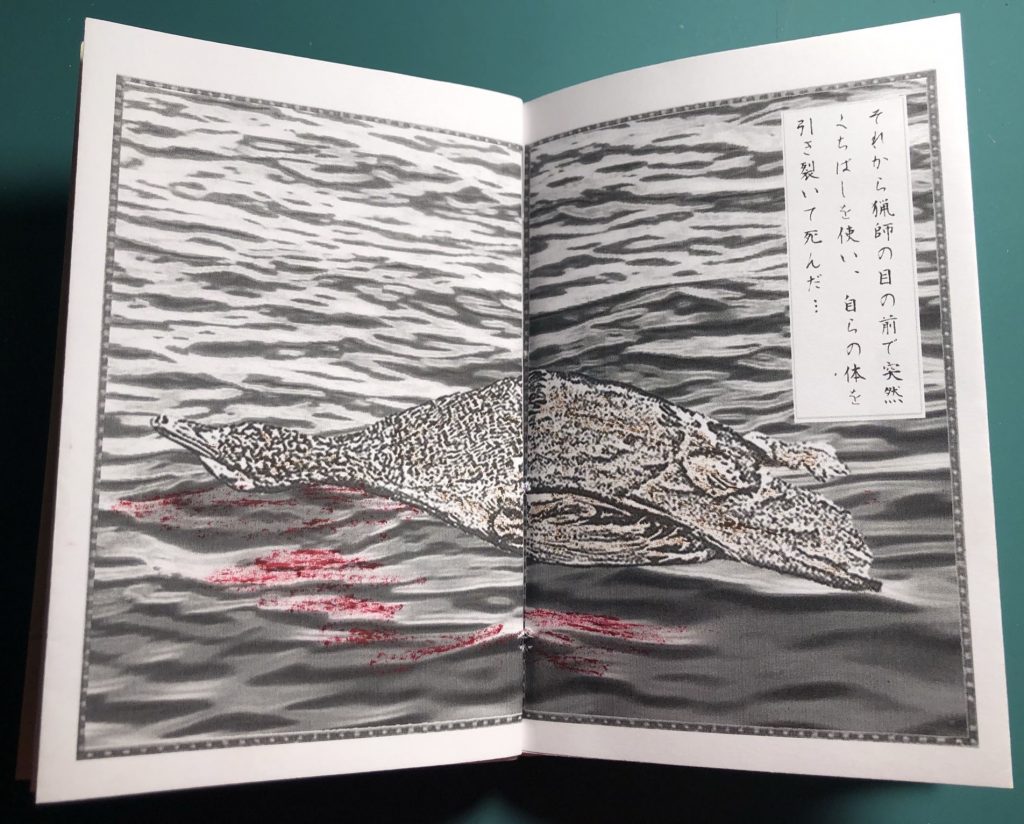
Then, with her beak, she suddenly tore open her own body, and died before the hunter’s eyes…
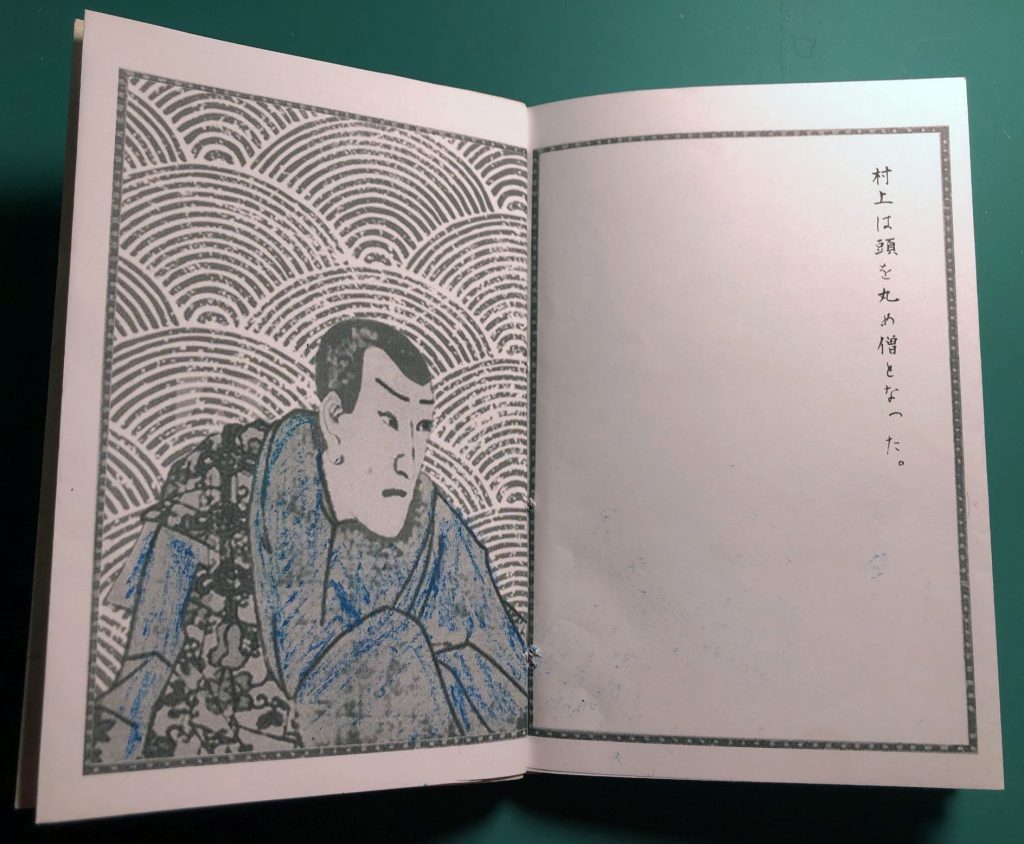
Sonjō shaved his head, and became a priest.
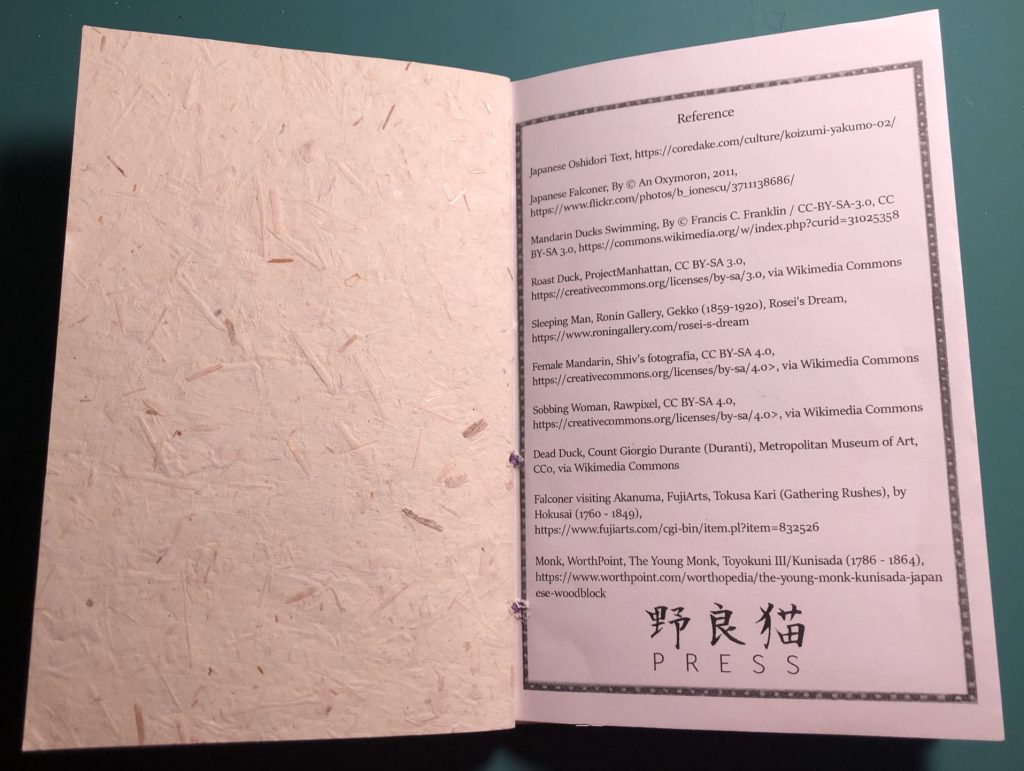
The final page has the references for the text and images as well as the press name. “noraneko” means “stray cat” and is a nick name I picked up as a student in Japan.
